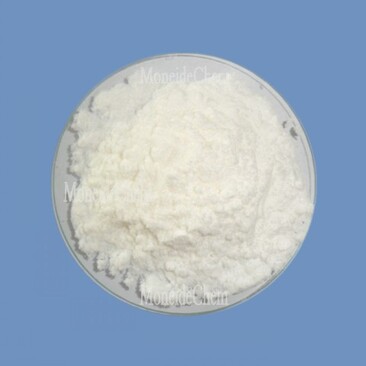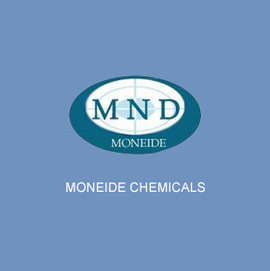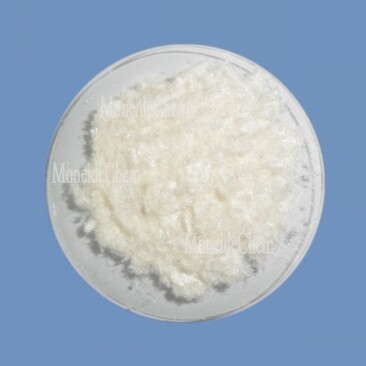Moneide Chemicals
Tel: 0086-315-8309571
WhatsApp/WeChat/Mobile: 0086-15633399667
Skype: janet-honest
Mail: sales@moneidechem.com
Address: 2-7-523 Jidong Building Materials Commercial Center, Tangshan, Hebei 064000 China
The Role of Copper Sulfate and Cyanide in Electroplating Processes
- Time of issue:Mei . 16, 2025 14:09
(Summary description)Tangshan Moneide Trading Co., Ltd. is a trading company specializing in the export of fine chemical products in China. Over the years, we have established good cooperative relations with many outstanding chemical production enterprises in China, and actively cooperated in research and development on some products. Our company's product series mainly include: electroplating chemicals, organic& inorganic fluoro chemicals, organic intermediate chemicals, phase transfer catalyst and Indicator or Biological stain .
- Categories:Company dynamic
- Author:
- Origin:
- Time of issue:2019-12-30 10:55
- Views:
In the realm of industrial surface finishing, electroplating stands as a pivotal technique for enhancing the properties of metal objects. Two key components, copper sulfate and cyanide, play significant roles in various electroplating applications, each contributing to specific outcomes in terms of coating quality, adhesion, and process efficiency. Copper sulfate for plating is widely utilized in electroplating baths to deposit a uniform and adherent copper layer onto substrates. In non - cyanide electroplating processes, such as acidic copper plating, copper sulfate pentahydrate (CuSO₄·5H₂O) dissolves in water to form a conductive solution. This solution provides copper ions (Cu²⁺) that migrate to the cathode (the object being plated) during the electroplating process, where they are reduced to metallic copper (Cu). The use of copper sulfate for plating ensures a consistent supply of copper ions, facilitating the formation of a dense, ductile copper coating that improves the electrical conductivity, corrosion resistance, and aesthetic appeal of the plated items. For example, in the electronics industry, copper plating using copper sulfate solutions is essential for coating circuit boards and connectors, ensuring reliable electrical performance. A copper sulfate plating solution typically consists of copper sulfate, sulfuric acid, and organic additives. The sulfuric acid serves to increase the conductivity of the solution and stabilize the copper ions, preventing hydrolysis and the formation of insoluble copper hydroxides. Organic additives, such as 整平剂 (leveling agents) and brighteners, are often included to enhance the smoothness and brightness of the plated copper layer. The pH of the copper sulfate plating solution is usually maintained in the acidic range (pH 1 - 4) to ensure optimal deposition rates and coating quality. This type of solution is particularly suitable for plating onto substrates like steel, brass, and plastic (after proper activation), providing a base layer for subsequent nickel or chrome plating in decorative and functional applications. Copper sulphate electroplating (using the British spelling "sulphate") is a versatile process that offers several advantages over other copper plating methods. The acidic nature of the copper sulphate solution allows for high current efficiency, meaning a greater proportion of the electrical current is used for depositing copper rather than producing hydrogen gas. This results in faster plating speeds and lower energy consumption. Additionally, copper sulphate electroplating can achieve thick copper deposits with good ductility, making it ideal for applications requiring mechanical strength, such as in the automotive industry for plating engine components. The process is also relatively straightforward to control, with parameters like temperature, current density, and solution composition easily adjustable to meet specific plating requirements. Cyanide electroplating has historically been used for plating metals like copper, silver, and gold, particularly in cases where a high - quality, adherent coating is required on difficult - to - plate substrates. In cyanide - based copper plating solutions, copper ions are complexed with cyanide ions (CN⁻) to form stable copper cyanide complexes (Cu(CN)₂⁻). These complexes dissociate slowly at the cathode, allowing for controlled deposition of copper with excellent throwing power (the ability to plate evenly in recessed areas). However, the use of cyanide electroplating is increasingly regulated due to the toxicity of cyanide, which poses significant environmental and safety risks. Proper handling, waste treatment, and ventilation are essential when working with cyanide - containing solutions to prevent harm to operators and contamination of waterways. The presence of cyanide in electroplating has driven the development of alternative plating solutions to mitigate its hazards. Non - cyanide alternatives for copper plating, such as the acidic copper sulfate solutions mentioned earlier, have become more prevalent, offering comparable performance without the toxicity of cyanide. However, in some specialized applications, such as plating on zinc die - castings or certain exotic metals, cyanide - based solutions may still be preferred for their superior adhesion and throwing power. Regulatory bodies worldwide have imposed strict limits on the discharge of cyanide into the environment, requiring electroplating facilities to implement advanced wastewater treatment systems to break down cyanide into less harmful substances, such as carbon dioxide and nitrogen gas, before disposal. To ensure optimal results in electroplating processes involving copper sulfate and cyanide, several best practices should be followed. For copper sulfate solutions, regular maintenance, including filtration to remove impurities and analysis to monitor chemical concentrations, is crucial for consistent plating quality. When dealing with cyanide - containing baths, operators must wear appropriate personal protective equipment and follow strict safety protocols to avoid exposure. Additionally, staying updated with local and international regulations regarding the use and disposal of cyanide is essential to ensure compliance and environmental responsibility. Given the toxicity of cyanide, special safety measures are necessary when working with cyanide in electroplating. This includes storing cyanide compounds in sealed, labeled containers away from acids (which can release toxic hydrogen cyanide gas), installing gas detection systems in plating areas, and training staff in emergency procedures for cyanide exposure. Wastewater from cyanide electroplating must be treated using methods like alkaline chlorination, where cyanide is oxidized to non - toxic cyanate ions, before it is discharged or recycled. As environmental concerns grow, the electroplating industry is increasingly shifting toward more sustainable practices, including the use of cyanide - free solutions and eco - friendly formulations of copper sulfate plating solution. Research is ongoing to develop new organic complexes and additives that can replicate the performance of cyanide in terms of throwing power and adhesion without the associated risks. These advancements aim to balance the need for high - quality plating with the imperative of reducing the industry’s environmental footprint.
Copper Sulfate for Plating: A Fundamental Component
Copper Sulfate Plating Solution: Formulation and Properties
Copper Sulphate Electroplating: Process and Advantages
Cyanide Electroplating: Traditional Applications and Considerations
Cyanide in Electroplating: Alternatives and Regulatory Challenges
Best Practices for Copper Sulfate and Cyanide Electroplating
Safety Measures for Cyanide Handling
Emerging Trends in Electroplating Chemistry























